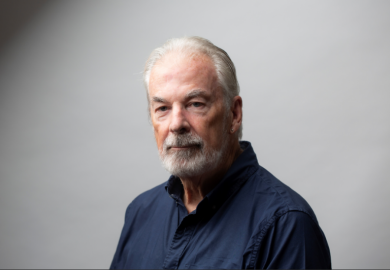Why are peer-reviewed journals about journalism like London buses? You wait for years for one and then two come along together. The reason is the research assessment exercise. It explains why these two journals were launched, virtually simultaneously, last year.
However, the circumstances of their birth should not be taken to suggest that these journals are at all lacking in merit. On the contrary, both contain an admirable range of articles, reviews and debates in a subject area that has, in a number of ways, been highly contentious.
It would be an easier job for a reviewer if there were some obvious differentiating factor between Journalism Studies and Journalism, but the subject matter and the quality of the contributions are not dissimilar.
Journalism looks better - it has a smaller format and the look of the text is cleaner and easier to digest. Journalism Studies is more substantial in terms of length of articles (an 8,000-word limit is on the long side) and pagination. Its typography is slightly odd. Quotes look like footnotes in the middle of the page and its layout is a disconcerting two columns a page.
But it has also been innovative in content. A debate section creates space for three or four shorter articles on a common theme. The reviews section contains website reviews alongside more conventional publications.
The launch edition of Journalism features a fascinating symposium on the nature of journalism studies with a typically insightful contribution from Michael Schudson, whose work on news and journalistic practice has been a model of academic inquiry. But the relevance of the symposium to the British audience is diminished by the fact that eight out of the ten contributors are based in the United States.
Of course, these journals have an admirable internationalist perspective but the first edition of a United Kingdom-based journal could have benefited from a greater contribution from British-based academics. Indeed, this first issue contains two further articles, one of which focuses on the United States and the other on continental Europe. It might have made more marketing sense to include at least one substantive article with a UK perspective.
However, in the next two issues the balance improves. For example, there is a fascinating analysis of the nature of the growing corporate public-relations sector by Aeron Davies and an insider's account of the ambivalent status of radio training in the UK by Heather Purdey.
Purdey has a background in professional journalism, as does Anthony Delano - who, in an article in Journalism Studies, continues his valuable mapping of the nature of the British journalist. But they are part of a minority of contributors when it comes to the critical balance between theoreticians and practitioners, a divide that both journals in their opening editorials seek to bridge.
No claims are being made for any superior insight that people with journalistic experience can bring to the scholarly reflection on journalism. But they can and do add perspectives not available to those who lack a professional background. The editorial boards of both journals are similarly lacking in practitioners, which appears to be a missed opportunity.
For several years an argument has been raging between those who teach journalism as a craft, and cultural and media studies theoreticians. That debate, which has been most intense in Australia, is reflected in the pages of these journals.
Keith Windschuttle, the journalist-turned-educator who first launched a broadside against his theory colleagues, gives a tumultuous and superficially convincing tirade in Journalism Studies against what he sees as the pretensions of the cultural and media studies theorists.
"The argument here," he writes, "is that the body of work called media theory does not deserve the academic standing it has and that it has no place in (the) professional education of journalists."
A more measured response is to be found in the pages of Journalism. Graeme Turner concludes rather plaintively: "It must be possible for journalism and cultural studies to admit the differences in their orientations, as well as the disciplinary divisions which limit cooperation, without excluding each other's knowledge from their fields of study."
The same conversation has taken place in the UK but far more sotto voce and with more light and less heat, as media practitioners and theoreticians have debated the place of "practice" within the higher education curriculum.
That debate reached its climax a few years ago in the context of the research assessment exercise, when the battle raged as to the comparability of media-practice artefacts with the more conventional output of media theoreticians. That debate created much of the momentum that led to the formation and launch of these journals, but its UK version is not reflected in the pages of either Journalism (which is subtitled Theory, Practice and Criticism) or Journalism Studies.
But these are early days and a journal can publish only that which it is offered for publication. It is to be hoped that the lack of debate about links between theory and practice, and the lack of practitioners reflecting on the practice and teaching of journalism, will be remedied in future volumes.
Ivor Gaber is emeritus professor of broadcast journalism, Goldsmiths College, University of London, and a freelance broadcaster and media consultant.
Journalism Studies
Editor - Bob Franklin, Gerd Kopper, Elizabeth Toth and Judy VanSlyke Turk
ISBN - ISSN: 1461 670X
Publisher - Routledge, (four times a year, www.tandf.co.uk)
Price - £40.00 (individuals) £148.00 (institutions)
Register to continue
Why register?
- Registration is free and only takes a moment
- Once registered, you can read 3 articles a month
- Sign up for our newsletter
Subscribe
Or subscribe for unlimited access to:
- Unlimited access to news, views, insights & reviews
- Digital editions
- Digital access to THE’s university and college rankings analysis
Already registered or a current subscriber?



